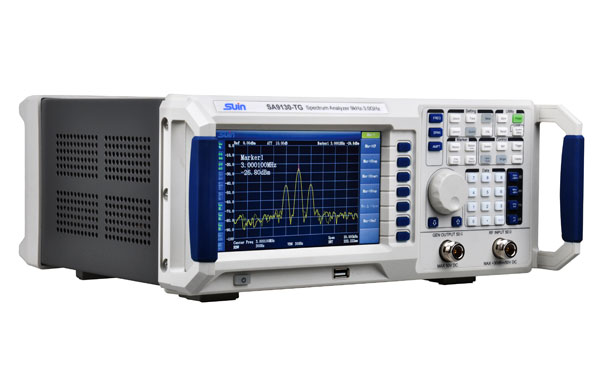

Q1: The smaller the resolution bandwidth (RBW), the better?
A: The smaller the RBW, the better the sensitivity of the spectrum analyzer suplied from Wholesale Spectrum Analyzer. However, the scanning speed will be slower. RBW must be set according to the actual test requirements to find a balance between sensitivity and speed -- to ensure both accurate measurement signal and fast measurement speed.
Q2: How to choose averagetype: power? Logpower? Voltage?
Logpower averaging: also known as videoaveraging. The averaging method has the lowest level of noise. Ideal for testing low-level continuous wave signals. However, there will be a certain error for "noise-like" signal, such as wideband modulation signal w-cdma.
Power average: also known as RMS average, this average method is suitable for "noise" signal (such as: cdma) total power measurement.
Voltage averaging: this averaging method is suitable for measuring the rise and fall time of an am signal or a pulse modulation signal.

Q3: Sweep mode selection: sweep or FFT?
A: The sweep mode of modern China Spectrum Analyzer usually has sweep mode and FFT mode. FFT generally has a speed advantage over sweep when set to a narrower RBW, but sweep mode is faster when set to a wider RBW.
When the sweep width is less than FFT analysis bandwidth, FFT mode can measure the transient signal. When the sweep width exceeds the FFT analysis bandwidth of the spectrum analyzer, if the FFT scanning mode is adopted, the working mode is to process the signal in segments, and there is discontinuity between segments in time, then useful signals may be lost in the signal sampling interval, and the spectrum analysis will be distorted. This type of signal includes: pulse signal, tdma signal, FSK modulation signal and so on.
Dec. 19, 2025
Differences Between Function Generators, Arbitrary Function Generators, and Arbitrary Waveform GeneratorsNov. 18, 2025
Uses and Benefits of Programmable Power SuppliesNov. 07, 2025
Suin at 11th Feria FISE 2025 in Colombia